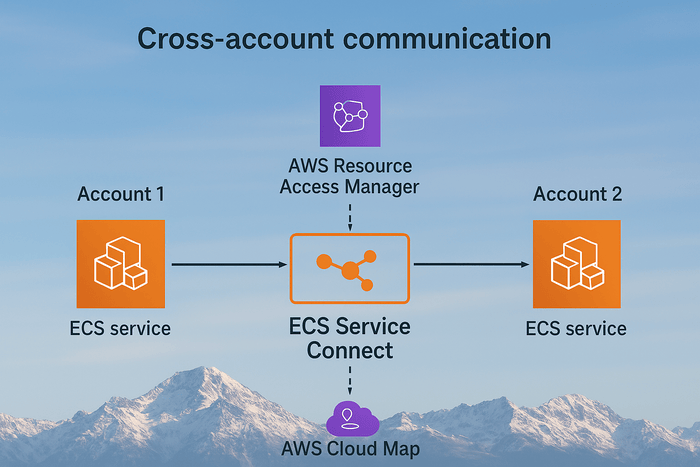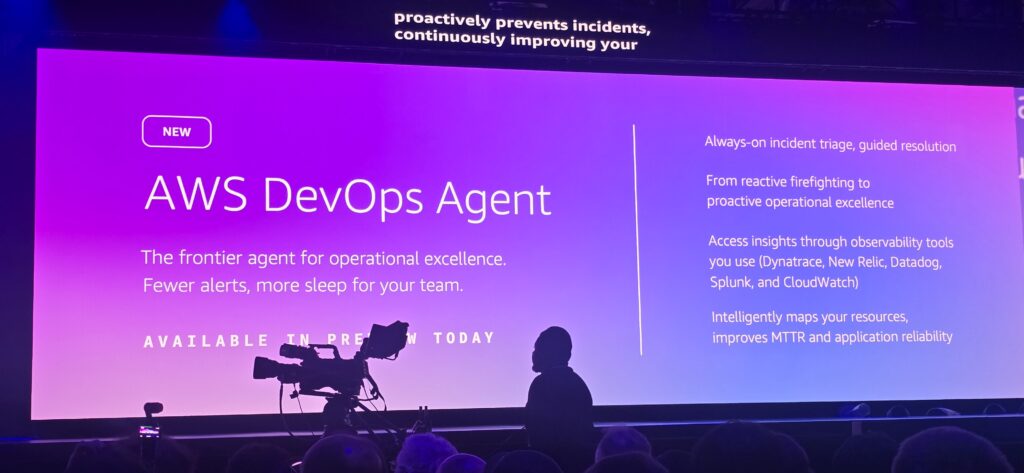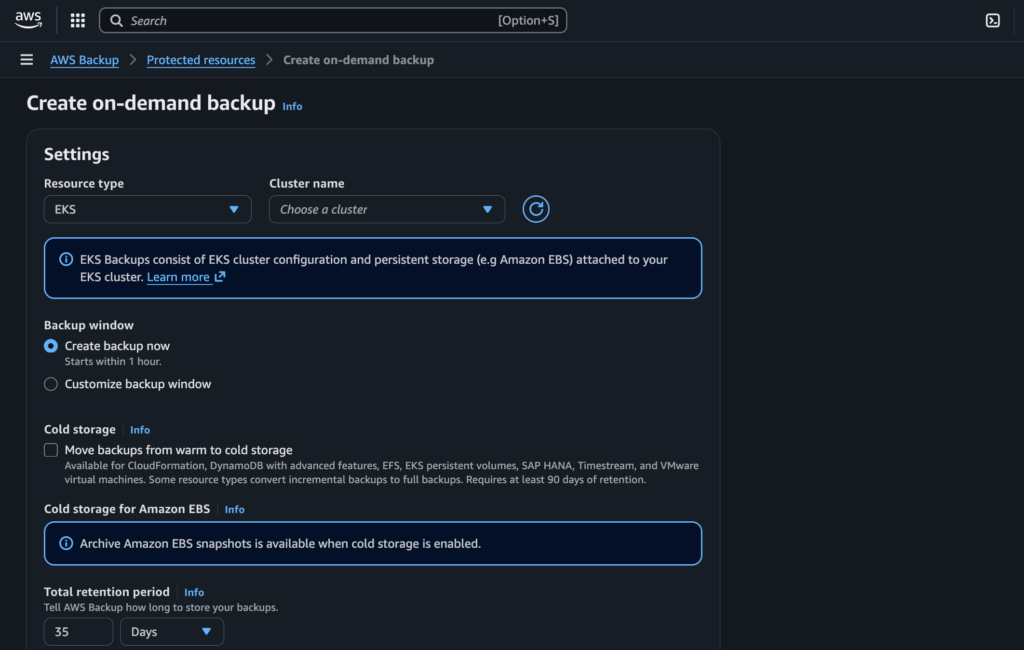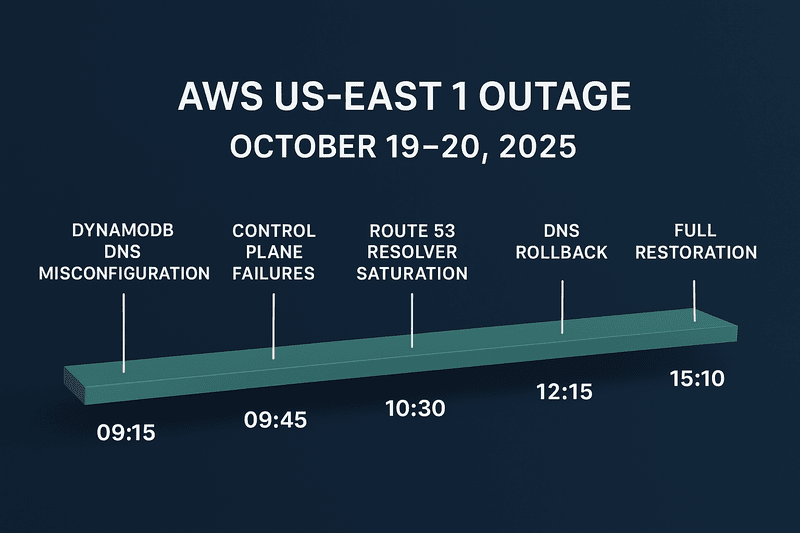On September 12, 2025, AWS announced a significant update to Amazon ECS Service Connect: support for cross-account workloads. This enhancement allows services running in different AWS accounts to communicate seamlessly, thanks to integration with AWS Resource Access Manager (AWS RAM). For organizations running multi-account environments, this update reduces complexity, streamlines connectivity, and enhances scalability.
But before we dive into the announcement, let’s break down what Amazon ECS Service Connect is, why it matters in the ECS ecosystem, and how this new capability elevates its value.
What is Amazon ECS Service Connect?
Amazon Elastic Container Service (ECS) is one of AWS’s fully managed container orchestration platforms. ECS allows developers to run containerized applications at scale, whether on EC2 instances or using AWS Fargate for serverless container management.
Service Connect is an enhancement to ECS that simplifies service-to-service communication within an ECS cluster or environment. Traditionally, connecting microservices deployed on ECS involved managing networking complexity with load balancers, VPC peering, or custom service discovery mechanisms.
With ECS Service Connect, AWS provides:
- Native service discovery using AWS Cloud Map namespaces
- Secure, reliable, and consistent communication between ECS tasks and services
- Simplified configuration, reducing the need for custom networking or third-party tools
In short, ECS Service Connect acts as the backbone for microservice communication in ECS, making it easier for teams to focus on building applications instead of managing connectivity.
Why Service Connect is Important in the ECS Ecosystem
In modern cloud-native applications, microservices are the standard architecture. Each microservice might handle a specific domain (e.g., payments, authentication, inventory). For these services to work together, they must communicate reliably and securely.
Here’s why ECS Service Connect is a game-changer within the ECS ecosystem:
- Service Discovery Simplified
Instead of manually managing service endpoints, ECS Service Connect integrates with AWS Cloud Map to automatically register services. Applications can then discover and connect using logical names, not IPs or load balancers. - Improved Security and Isolation
ECS Service Connect integrates with service-level networking policies, making it easier to secure communication paths between services without manually managing complex security groups. - Consistency Across Launch Types
Whether you’re running ECS workloads on EC2 or Fargate, Service Connect works consistently. This flexibility supports hybrid workloads and gradual migrations. - Operational Efficiency
By abstracting away networking complexities, platform teams spend less time on wiring and more time on scaling and optimizing services.
In short, Service Connect strengthens ECS by providing the glue that holds microservices together, ensuring consistent communication across clusters and accounts.
The New Update: Cross-Account Workloads
Now, with the new cross-account support, ECS Service Connect takes a step further to address one of the most common enterprise challenges: multi-account architectures.
Organizations often use multiple AWS accounts for:
- Security isolation (e.g., separating dev, staging, and production)
- Team autonomy (each department or business unit has its own account)
- Compliance and billing (clearer boundaries for cost allocation and governance)
Until now, ECS Service Connect services were largely restricted to communication within a single account. If you wanted cross-account communication, you had to rely on more complex setups like VPC peering, PrivateLink, or shared networking models.
With this update, ECS Service Connect now integrates with AWS RAM to share Cloud Map namespaces across accounts. Here’s how it works:
- Share Cloud Map Namespaces:
Using AWS Resource Access Manager (RAM), you can share a Cloud Map namespace with specific accounts, Organizational Units (OUs), or your entire AWS Organization. - Unified Service Registry:
ECS services from multiple accounts can now register into the same namespace, enabling consistent service discovery and communication. - Simplified Connectivity:
Developers don’t need to worry about managing endpoints, duplication, or availability across accounts. Service-to-service communication just works. - Supports All Modes:
This feature works across both EC2 and Fargate launch modes, giving flexibility regardless of how you run your containers.
Why This Matters
This announcement is more than just a networking enhancement—it’s a step toward making ECS more enterprise-friendly and aligned with AWS Organizations’ best practices.
Key Benefits:
- Operational Efficiency: Reduced duplication of services across accounts.
- Scalability: As organizations grow, services can communicate seamlessly without re-architecting networking.
- Consistency: Developers can rely on the same namespace for service discovery, regardless of account boundaries.
- Governance & Security: Administrators can control sharing at the account, OU, or organization level using AWS RAM, ensuring security policies remain intact.
Use Cases for Cross-Account ECS Service Connect
- Shared Platform Services
Centralize common services (e.g., authentication, monitoring, billing) in a single account and make them available to workloads in multiple accounts. - Multi-Account Microservice Architecture
Run domain-specific microservices in separate accounts (e.g., payments in one, inventory in another) while ensuring they can communicate seamlessly. - Dev/Stage/Prod Environments
Developers can use Service Connect across accounts to test services in staging before moving them into production, while still connecting to shared dependencies. - Centralized Observability
A central account running observability services (metrics, logging, tracing) can connect to ECS workloads running in other accounts without complex networking.
Getting Started
To enable cross-account ECS Service Connect:
- Create a Resource Share in AWS RAM.
- Add Cloud Map namespaces you want to share.
- Specify principals (accounts, OUs, or organizations) that should have access.
- Register ECS services from multiple accounts into the shared namespace.
From there, applications can communicate across accounts using simple, consistent service names.
Conclusion
Amazon ECS Service Connect has already simplified how ECS services communicate within a cluster and account. Now, with cross-account workload support, AWS has unlocked a new level of flexibility, scalability, and efficiency for enterprises running multi-account architectures.
For platform engineers, this reduces operational complexity. For developers, it means building applications without worrying about network wiring. And for organizations, it means faster scaling, better governance, and consistent connectivity across environments.
This update reaffirms Amazon ECS as a powerful, enterprise-ready container orchestration platform—and one that continues to evolve to meet the needs of modern, distributed applications.
👉 Want to learn more? Check out the official Amazon ECS Service Connect documentation.







